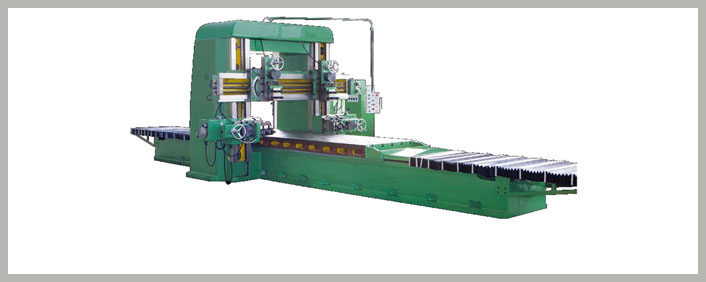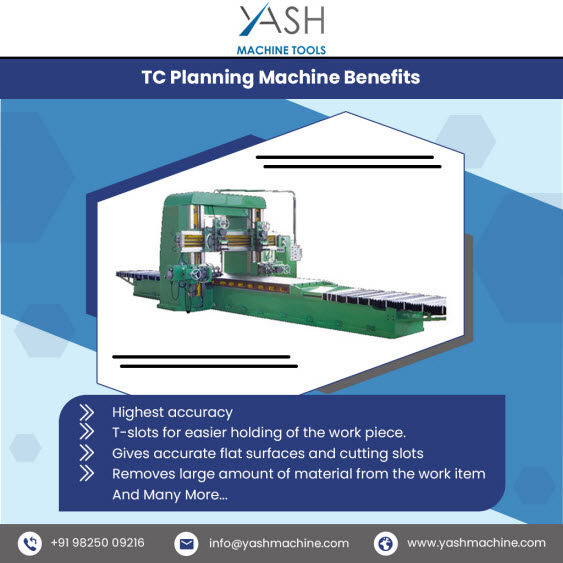The Versatility and Benefits of Customized Planing Machines
Planing machines are used for cutting grooves, shaped forms, and flat surfaces in wood or other materials. They operate by creating a linear reciprocating motion between the tool and the workpiece to plane the surface.
Whether you are looking for a woodworking tool for your commercial operation, customized planing machines can benefit you. In addition to their versatility, custom planer machines are more accurate and efficient than hand planers. They can also help reduce manufacturing costs and increase productivity. For cabinet makers and other woodworking shops, customized planers can help them achieve additional productivity in areas beyond what standard off-the-shelf machinery can accomplish. They also are a good investment that can expand a shop’s capabilities and potential for growth.
A mechanical planer smooths a piece of wood to an even thickness. They are available in a wide range of sizes and models. They include a frame, feed rolls, and a cylindrical cutting head that contains three or more knives that pare off the excess wood as it passes through the machine.
Enhancing Precision and Efficiency in Woodworking with Planing Machines
Whether you need to smooth rough lumber, clean up sawn edges or make a custom planked spindle, a customized planing machine will help you achieve your woodworking needs. These machines will also save you time and money. Customized planers are easy to use and will give you a smooth, flat finish. They are also highly accurate and efficient.
You can even get a thickness planer that will allow you to consistently mill boards of the same thickness and avoid the problem of misaligned pieces. In addition to saving money and time, a customized planer will also save you from having to purchase more lumber. These machines are a great investment for any woodworker looking to extend their skills and take control over their projects.
Customized planing machines can provide woodworkers with a smooth and even surface finish that can help make the job of making furniture easier. Additionally, they can help ensure that the finished product is of a precise thickness and a consistent size.
Another important tool for planing is a combination square. These are useful for calibrating your machinery and can greatly reduce the amount of time it takes to set up a cut, curve or finish.

The Power of Planing Machines
Planing is a wood manufacturing technique that involves removing a thin layer of wood to create a smooth surface. It can be done using hand planes or machine planers. Having both of these tools will help you extend your woodworking skills, reduce the cost of lumber and take greater control. Planers are essential woodworking tools that you must have in your shop if you want to work with rough-cut lumber. A jointer squares and flattens one face of a piece of rough-cut lumber to make it parallel to the other faces. A planer is used to square and straightens the opposite face. Both tools are essential to working with rough-cut lumber and are important for any woodworker who wants to increase their skills and take more control over their projects.
Planing machines use linear reciprocating motion between a workpiece and a cutting tool to cut shape, or mill a workpiece. They are commonly used in woodworking for creating horizontal, inclined, dovetail, T-shaped, V-shaped, and vertical groves on solid wood materials.
The Importance and Selection of Planing Machines
Planing machines are essential for woodworking applications to provide a level surface, consistent thickness, and a smooth finish. They can be used for a wide range of tasks, from trimming door and window frames to creating decorative profiles on the edges of boards.
To keep the planer in good working condition, you should regularly clean it and change the oil. Planers also need to be positioned correctly in your shop. They should have enough space in both directions to accommodate the maximum stock length you can feed into them.
There are several types of planers, and you should consider which one is best for the type of woodworking project you’re planning. Some are better for fine work while others are designed for large-scale woodworking projects. For example, a jointer plane is a great choice for trimming mortise-tenon joints or flattening rough stock. It’s also a great tool for truing pieces of wood and creating straight edges.
- How Lathe Machine Manufacturers are Powering the Nation’s Engineering Growth in Canada?
- How Chamfer Machines Are Streamlining Metalwork in the UK’s Manufacturing Sector?
- How Feed Rate Adjustments Improve Surface Finish in Vertical CNC Milling Machines?
- How Radial Drilling Machines Achieve Low Vibration and Distortion Resistance?
- From Design to Execution: How CNC Press Brakes Ensure Seamless Workflow
- How to Optimize Sheet Metal Operations Using a Hydraulic Press Brake?



